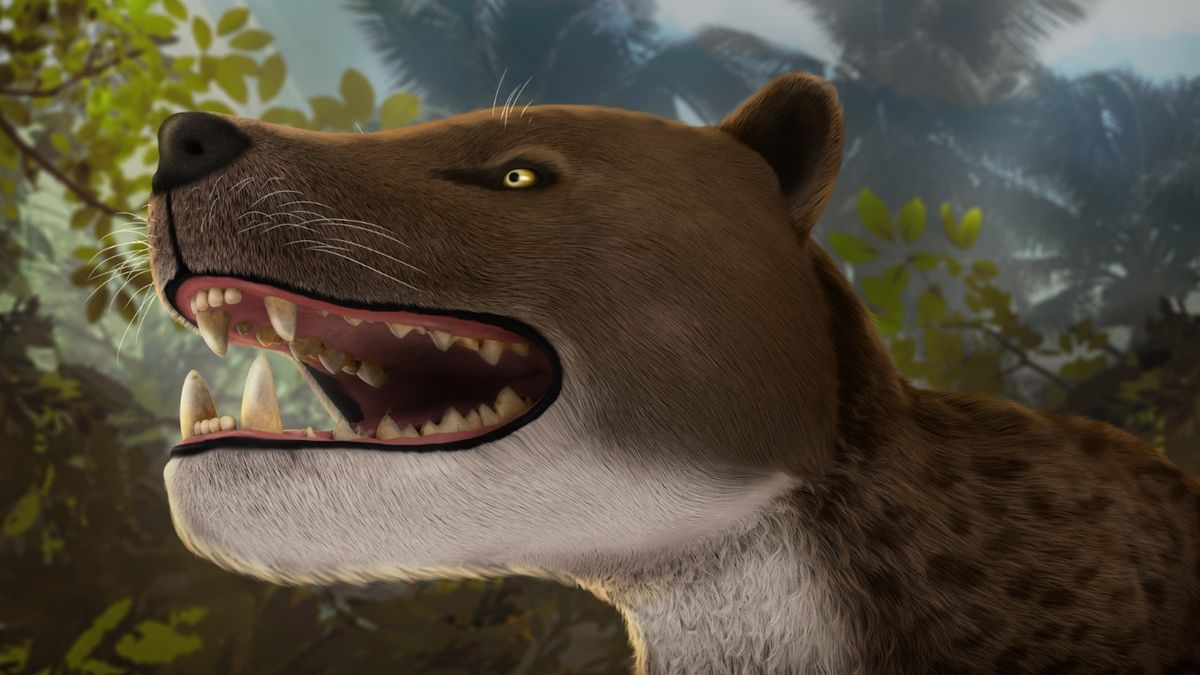A skull discovered in the Egyptian desert belongs to a never-before-seen apex predator that roamed parts of North Africa and the Arabian Peninsula about 30 million years ago, scientists say.
The skull was unearthed in the Jebel Qatrani Formation, about 60 miles (100 kilometers) from Cairo. Now, scientists have identified it as a new species, called Bastetodon syrtos, in a study published Feb. 17 in the Journal of Vertebrate Paleontology.
When B. syrtos lived, the region would have been covered by a lush forest. It is a member of an extinct order of mammals known as hyaenodonts, which thrived from around 66 million to 5.3 million years ago. It was likely a “hypercarnivore,” scientists say — a carnivore with a diet of more than 70% meat.
Related: Mysterious ‘hypercarnivore’ with blade-like teeth roamed California 42 million years ago
“For days, the team meticulously excavated layers of rock dating back around 30 million years,” lead author Shorouq Al-Ashqar, a researcher at Mansoura University and the American University in Cairo, said in a statement.
“Just as we were about to conclude our work, a team member spotted something remarkable — a set of large teeth sticking out of the ground,” she said. “His excited shout brought the team together, marking the beginning of an extraordinary discovery: a nearly complete skull of an ancient apex carnivore, a dream for any vertebrate paleontologist.”
A detailed examination of the skull revealed it had a short, cat-like snout and a powerful jaw capable of dismembering prey. Unlike many of today’s carnivores, which have specialized, flat shearing teeth, hyaenodonts like B. syrtos had multiple sets of blade-like teeth, reflecting their hypercarnivorous diets.
According to the statement, B. syrtos likely feasted on the ancient relatives of modern-day hippos, elephants and primates.
The discovery prompted the researchers to reanalyze a group of lion-size hyaenodonts discovered in the same region over 120 years ago. These older samples are a different species, but they are closely related to B. syrtos, the researchers said. However, a few key differences led them to create a new genus, Sekhmetops, to describe these other hyaenodonts.
“The discovery of Bastetodon is a significant achievement in understanding the diversity and evolution of hyaenodonts and their global distribution,” Al-Ashqar said.
Hyaenodonts eventually spread from Africa in multiple waves, making it to Asia, Europe and North America. However, dramatic climate changes eventually allowed new carnivores to enter the continent, and the hyaenodonts went extinct, making way for the ancestors of modern carnivores.


